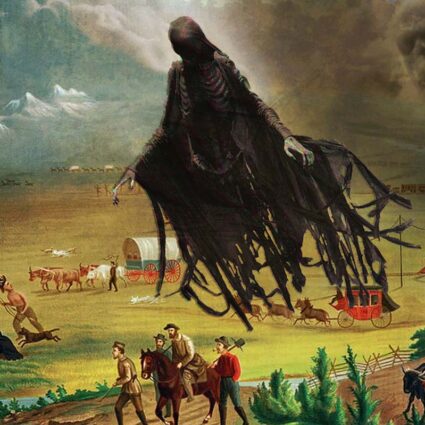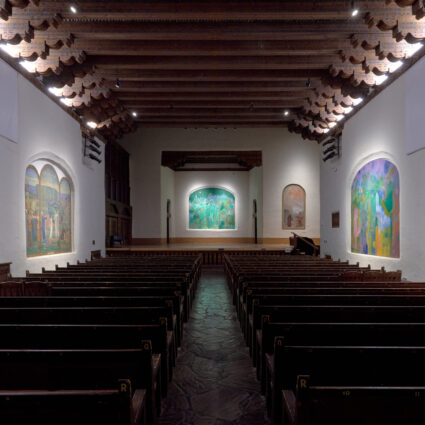
It seems that cinematic sequels are all the rage these days. Even theater is not immune to this urge to put iconic characters in new situations. Take, for example, the play Hedda Gabler by proto-feminist playwright Henrik Ibsen. There is Jeff Whitty’s The Further Adventures of Hedda Gabler, where the gun-toting anti-hero of the title ends up in purgatory after her suicide at the end of the play. Once there, she is confronted with a comedic team of misfit iconic characters, such as Mammy from Gone with the Wind, who struggle with the question of their relevancy in modern life because of their misogynistic or racist underpinnings.
Another Ibsen play, A Doll’s House, recently got the sequel treatment. Much like the original play, A Doll’s House, Part 2 by Lucas Hnath is sort of the serious, buttoned-down sister of Hedda Gabler’s further adventures. In the original A Doll’s House, written in 1879, Nora is driven to walk out on her husband and family by the extent to which women are disempowered in Victorian Sweden. Given a total lack of autonomy and few choices, Nora’s only option is to leave. Ibsen’s plays can be experienced as surprisingly modern. This is owing largely to how realized and interesting his female characters are and by how much they desire a partnership with their husbands rather than a life of subservience in which they are treated as delicate toys. In a telling exchange near the end of the play, Nora says, “Torvald, don’t look at me like that!” to which her husband replies, “Why shouldn’t I look at my dearest possession? At all that loveliness that’s mine, mine alone, completely mine?” And a moment later, she responds, “Yes, yes; oh, yes, I know you’re always thinking of me.” His patronizing tone is enough to rankle any modern viewer, but Nora tolerates it with a passive, distractedly bemused attitude. Overall, Nora’s text mainly revolves around how tired she is. Audiences of the time might have found Torvald’s possessiveness totally acceptable, and even today this talk between lovers of all genders is disturbingly common. Despite this, the central questions of the play demand a little re-framing for contemporary audiences. Gender inequality is hardly a thing of the past, but gender-based discrimination manifests in starkly different ways than it did in the 1880s. It is not a reach to say that the regressive drive of Trump’s America makes these questions suddenly and especially relevant. At the end of the original play, Nora leaves, slamming the door behind her. The assumption is that she will never return to that life. In Hnath’s Part 2, however, Nora walks back through the same door fifteen years later as a successful feminist novelist to finalize her divorce from Torvald.
As audience members in this age of sequels, we should ask ourselves what meditations on marriage and gender a contemporary writer can bring to this story. Why is it pertinent to revisit this dated story at all? While the sequel to Hedda Gabler asks questions that can only be asked of an iconic character with the sort of historical clout of Hedda herself, A Doll’s House, Part 2 will present a different set of questions. A huge hit on Broadway in 2017, the play received eight Tony nominations, and fortunately, we can all find out what all the fuss is about at Teatro Paraguas (3205 Calle Marie, Ste B, Santa Fe), where the play will be presented by New Mexico Actor’s Lab May 9-26, 2019. Tickets are $25. A Doll’s House, Part 2 will be directed by the venerable Robert Benedetti, who will no doubt do an excellent job with the text. The play should be fun and will hopefully leave us with some interesting meditations on how far we’ve come as a society and how far we still have left to go.
A Doll’s House, Part 2
Teatro Paraguas, Santa Fe
May 9-26, 2019
Thursdays-Saturdays at 7:30 pm, Sundays at 2 pm
Tickets: nmactorslab.com
Three Performances to Catch in May
Marjorie Prime by Jordan Harrison explores issues around dementia and artificial intelligence. The story focuses on a woman who is losing her memories because of dementia and receives an AI device to help. It won the Pulitzer Prize in 2015 and will be produced by the Santa Fe Playhouse (142 E. De Vargas St, Santa Fe).
Tickets: santafeplayhouse.org.
I will be directing Tearing Down Walls: Voices from the Middle East and Santa Fe at the Institute of American Indian Arts and at the Swan Theatre. Written by Sara Gmitter and directed by yours truly, the play is based on personal testimonies by young Israeli and Palestinian women who have participated in the Creativity for Peace program and is a collaboration between that organization and the IAIA. These powerful stories are interwoven with the stories of IAIA students and Santa Fe community members. There are only two performances, on May 3 at IAIA (83 Avan Nu Po Rd, Santa Fe) and May 5 at the Swan Theatre (1213 Parkway Dr, Ste B, Santa Fe).
Tickets: $5 for students, $10 general admission, and will be available at the door.
“Exit pursued by a bear”: Scenes from The Winter’s Tale will be presented by Upstart Crows of Santa Fe May 10-12. The scenes will be performed by twelve young actors between the ages of ten and seventeen. Tickets are $10, and it is a great opportunity to support some up-and-coming performers.
Tickets and more info: upstartcrowsofsantafe.org.





